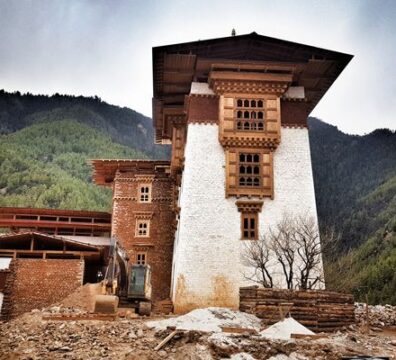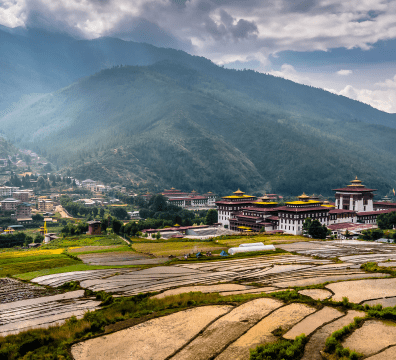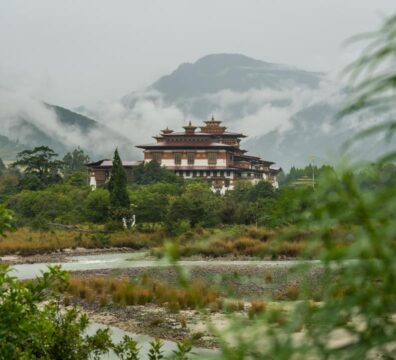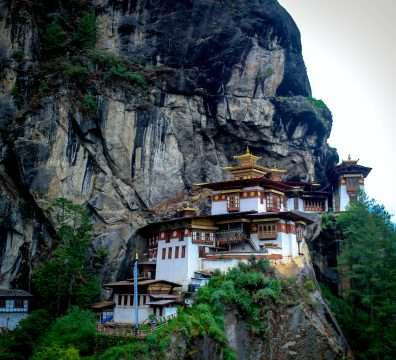BUDDHA DORDENMA :Iconic Statue of Tranquility
Home / Top Destination / Buddha Dordenma Statue
Overview of
BUDDHA DORDENMA STATUE
- Location : Thimphu
-
Inquiry Now
The Dordenma Buddha is a colossal statue measuring 51 meters high, built of bronze covered in gold plating. It sits atop the ridgeline that divides the city into the upper Thimphu valley (where the population is concentrated) and the more rural lower valley, which extends southward toward the confluence of the Paro and Thimphu Chhu rivers.
The statue was funded by a consortium of businessmen from Singapore, Taiwan, Hong Kong, and China, with groundbreaking in 2006. The construction effort, lasting nine years and costing at least $100M, was completed on September 25, 2015. Coinciding with the 60th birthday of His Majesty, King Jigme Singye, the 4th ruler of the Wangchuck dynasty, the statue was formally dedicated as part of the centennial of the monarchy’s establishment. The consecration was overseen by Bhutan’s highest religious authority, the Je Khenpo (Trulku Jigme Chhoeda, with term 1996-present). In 2019, the organizers of the effort, the Buddha Dordenma Project, formally transferred authority over the site to the Central Monastic Body of Bhutan on June 26, 2019.
According to the Tourism Council of Bhutan, the statue’s presence fulfills an 8th-century prophecy from Guru Rinpoche, also known as Padmasambhava, rediscovered by Tertön Pema Lingpa (1450-1521). According to the Buddha Dordenma organization, the specific prophecy stated, “A Shakyamuni statue would be built…in the region between Wong and Paro, to bestow blessings of peace and harmony in the world.” The auspicious location was formerly the home of the Kuensel Phodrang palace, built by Sherab Wangchuk (1697-1767), the thirteenth Druk Desi (secular ruler of Bhutan). The palace was largely in ruins and essentially lost at the opening of the twenty-first century; hence, the statue’s construction did not involve the demolition of any pre-existing cultural heritage.
The bronze statue comprises a mandala-shaped base 18.9 meters in height, surmounted by a 42.3 meter-high image of the Buddha Shakyamuni. The Buddha is rendered in the bhumisparsha mudra, in which the left palm faces upward while the right hand is pointed down toward the earth, calling her to witness his enlightenment following his triumph over the demon Mara. The interior of the statue is hollow and was designed to house upwards of 100,000 twenty-centimeter Buddha figurines sponsored by individual donors. A further 25,000 thirty-centimeter images are housed in the base of the throne. It is unclear how many were ultimately installed, as the five-story halls within the throne base are off-limits to photography, and the interior of the Shakyamuni image is wholly inaccessible—making the Buddha image a sort of living chorten; a reliquary within a reliquary.
The matryoshka-like nature of the Buddha’s body is a somewhat unique feature. Dev Nath Pathak, a professor of sociology at South Asian University, noted that the visitor approaching the Buddha image from the exterior cannot make eye contact with the colossal statue. However, the visitation becomes more “intimate and accessible to the ordinary worshippers” (Pathak, p. 221) when one enters the throne hall and its attendant lhakhangs, filled to the brim with thousands of figurines.
Further bringing the scale of the design down closer to the human level, a series of gold-plated dakini or apsara statues ring the edges of the site. These sinuous images stand perpetual sentinel, guarding the perimeter of the mountaintop as they gaze upward at the Buddha in serene triumph.
While the Dordenma Buddha Statue is a modern monument, the history of titanic metal Buddha images dates back many hundreds of years. Among the oldest extant examples is the much smaller 13th-century Daibutsu Buddha, cast in 1252 in Kamakura, Japan.





